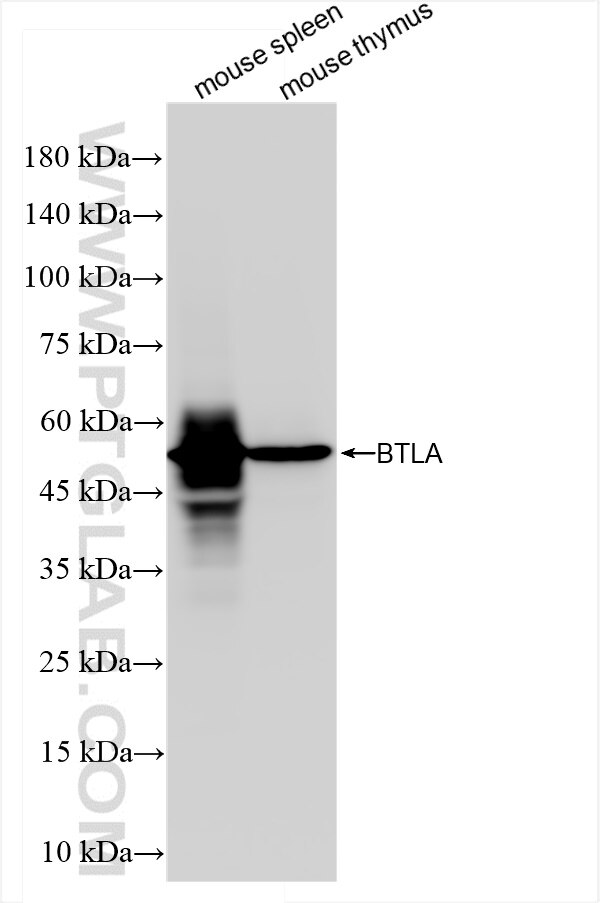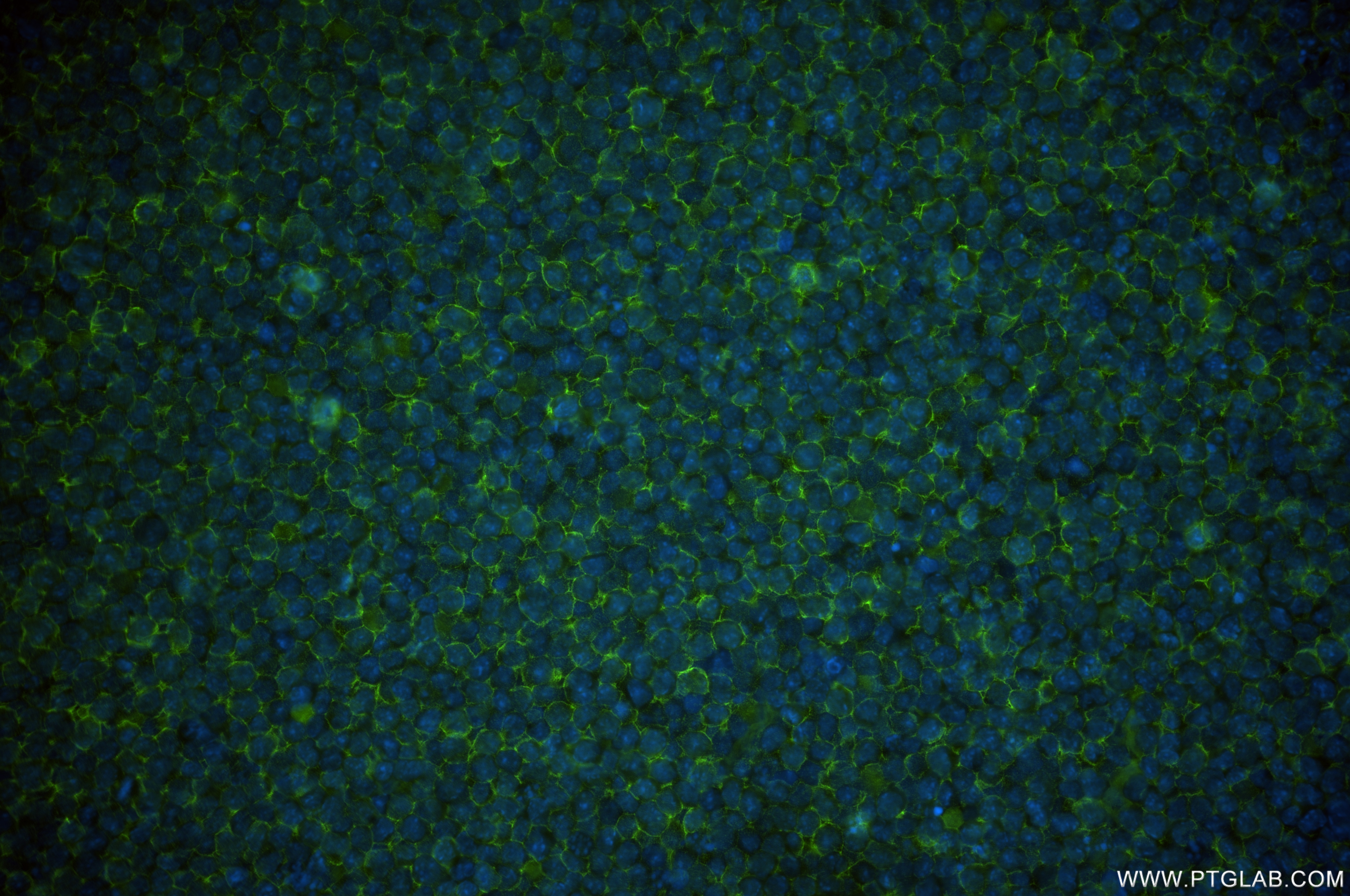Validation Data Gallery
Tested Applications
| Positive WB detected in | mouse spleen tissue, mouse thymus tissue |
| Positive IF/ICC detected in | A20 cells |
Recommended dilution
| Application | Dilution |
|---|---|
| Western Blot (WB) | WB : 1:5000-1:50000 |
| Immunofluorescence (IF)/ICC | IF/ICC : 1:200-1:800 |
| It is recommended that this reagent should be titrated in each testing system to obtain optimal results. | |
| Sample-dependent, Check data in validation data gallery. | |
Product Information
84754-5-RR targets BTLA in WB, IF/ICC, ELISA applications and shows reactivity with mouse samples.
| Tested Reactivity | mouse |
| Host / Isotype | Rabbit / IgG |
| Class | Recombinant |
| Type | Antibody |
| Immunogen | Recombinant protein 相同性解析による交差性が予測される生物種 |
| Full Name | B and T lymphocyte associated |
| Calculated molecular weight | 34kDa |
| Observed molecular weight | 50 kDa |
| GenBank accession number | AAI08964.1 |
| Gene Symbol | Btla |
| Gene ID (NCBI) | 208154 |
| Conjugate | Unconjugated |
| Form | Liquid |
| Purification Method | Protein A purfication |
| UNIPROT ID | Q32MV9 |
| Storage Buffer | PBS with 0.02% sodium azide and 50% glycerol , pH 7.3 |
| Storage Conditions | Store at -20°C. Stable for one year after shipment. Aliquoting is unnecessary for -20oC storage. |
Background Information
BTLA, or B and T lymphocyte attenuator, is a member of the CD28 superfamily and is a type I membrane glycoprotein identified as an inhibitory receptor (PMID: 33859648). BTLA is extensively expressed in lymph nodes, thymus, and spleen, with little or no expression in organs such as the heart, kidney, brain, and liver (PMID: 33859648). Among immune cells, BTLA is primarily expressed in B and T cells, with higher expression in B cells compared to T cells in the mouse spleen (PMID: 33859648). BTLA plays a crucial role in regulating stimulatory and inhibitory signals in immune responses.
Protocols
| Product Specific Protocols | |
|---|---|
| WB protocol for BTLA antibody 84754-5-RR | Download protocol |
| IF protocol for BTLA antibody 84754-5-RR | Download protocol |
| Standard Protocols | |
|---|---|
| Click here to view our Standard Protocols |


